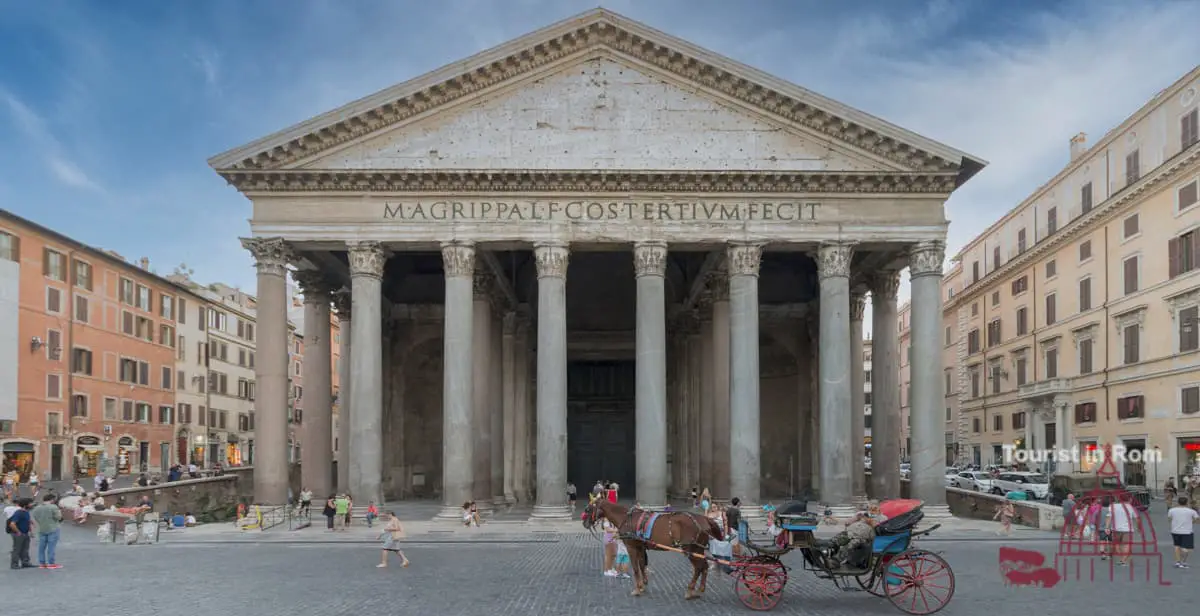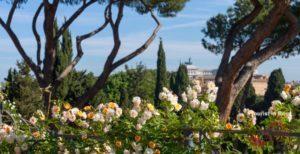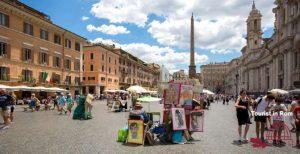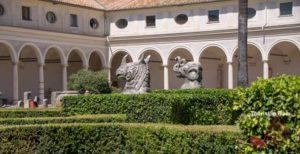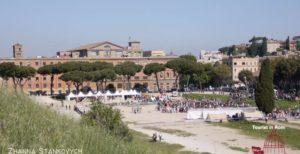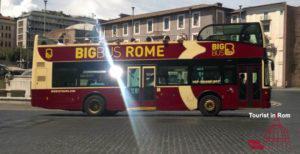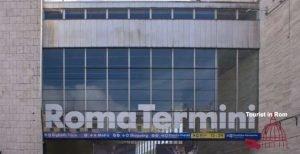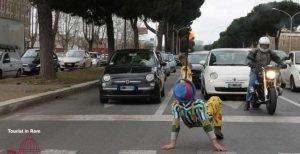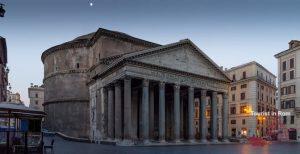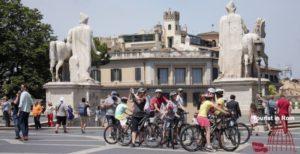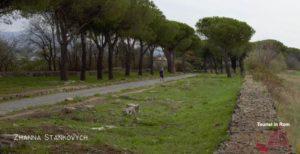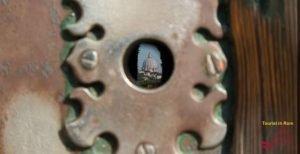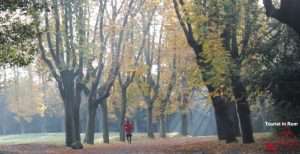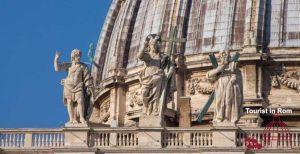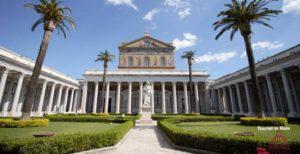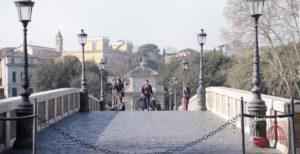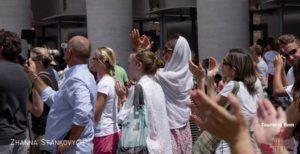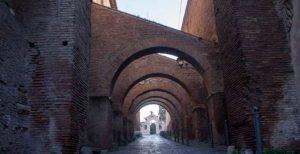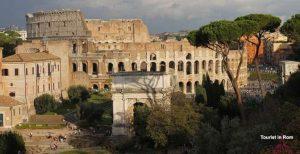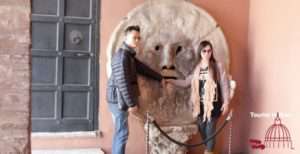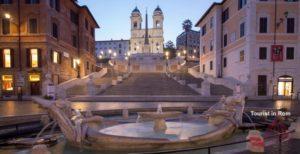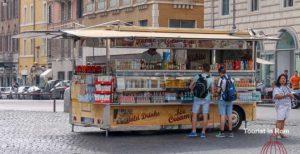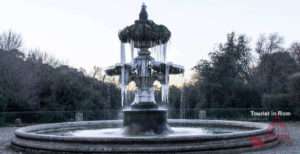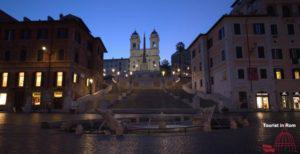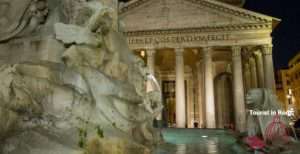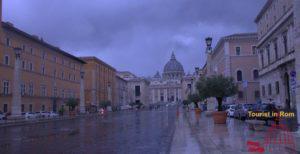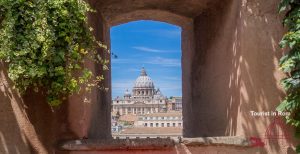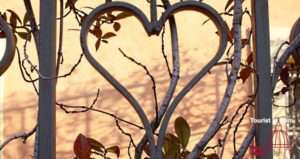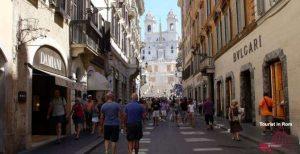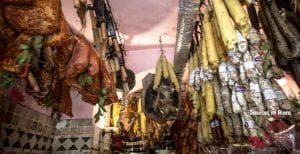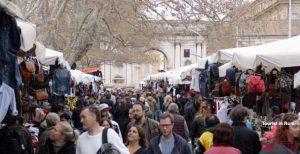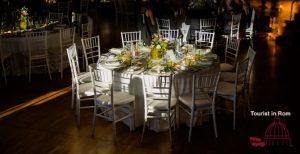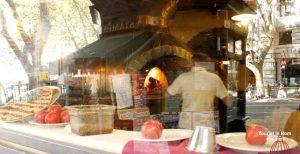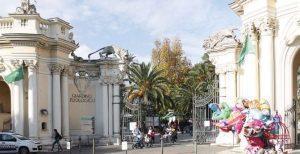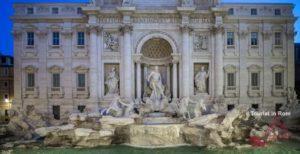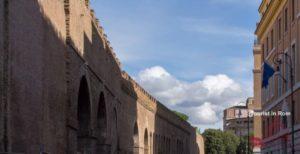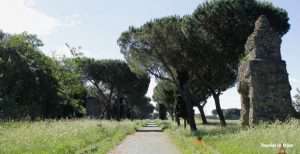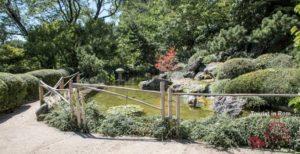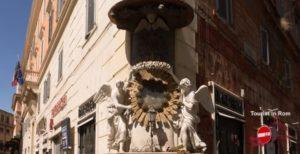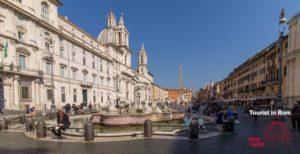The Pantheon in Rome is a superlative building and with its fascinating dome served as a model in Europe and the Mediterranean area.
It is undoubtedly one of the most fascinating and significant architectural marvels of the ancient world. Once a Roman temple and now a church, it is the most visited museum in Italy. It attracts millions of tourists every year, drawn by its impressive history and extraordinary design.
Partner-Links helfen uns dabei, unsere Informationen kostenlos bereitzustellen. Für abgeschlossene Buchungen erhalten wir eine Provision – ohne Mehrkosten für Sie! Mehr
Partner links help us to provide our information free of charge. For completed bookings we receive a commission – at no extra cost to you! More
I link dei partner ci aiutano a fornire gratuitamente le nostre informazioni. Riceviamo una commissione per le prenotazioni completate, senza alcun costo aggiuntivo per voi! Di più
Entry
Since the beginning of July 2023, admission to the Pantheon is required. The rules of the state museums apply, which provide free admission for all on the 1st Sunday of the month. Free admission is also available to young people up to the age of 18 and to residents of Rome. Admission is also free to masses, but visits are prohibited during masses.
A very good audio guide is offered for the Pantheon. To borrow it, an original ID must be given as a deposit.
Dress code
Rules for religious sites apply, shoulders and knees must be covered, bathing outfits with beach sandals are not allowed.
How to get there
The Pantheon is located on the Field of Mars. On foot, it is on the route between Piazza Navona and Trevi Fountain. By bus, take the bus to Torre Argentina or to Via del Corso.
Architecture
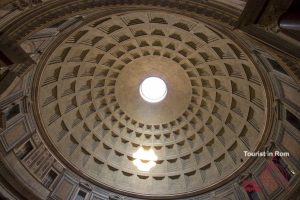
What makes the Pantheon truly unique is its impressive dome. With a diameter of about 43 meters, it is the largest unreinforced concrete dome in the world. The round opening in the center of the dome with a diameter of 9 meters, the oculus, gives a view of the sky and creates a unique atmosphere. Looking up, you will understand why the building is called Pantheon, temple of all gods. Whether it is raining, the sun is shining or you are looking at the evening sky, the Pantheon will always captivate you.
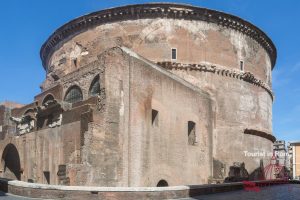
The dome rests on a circular structure, the rotunda. Concrete, tuff, travertine and brick were used as building materials, and you can see the years 30-15 BC and 115-127 by the markings on the bricks. The rotunda is entered through the rectangular vestibule, pronaus, supported by 16 columns. The 8 columns of gray granite come from the island of Elba, while the 8 columns of pink granite come from a quarry in Egypt.
Since the forecourt was lower in antiquity, people climbed five steps to reach the porch.
Cultural significance
The Pantheon has stood on the Field of Mars for about 1900 years and has survived earthquakes and other adversities without relevant damage.
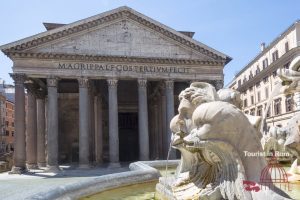
This feat was possible because the Romans had developed a particularly stable concrete. The Pantheon has therefore been the model for domes and buildings all over the world until modern times. Examples are the dome of St. Peter’s Basilica in Rome, the Pantheon in Paris and the Capitol in Washington.
Numerous artists found their final resting place in the Pantheon, among them the painter and architect Raffaello Sanzio. Also, the first king of Italy lies here with his wife and son.
History
The first Pantheon was built by order of the consul Agrippa in the years 27-25 BC, probably as a private temple dedicated to the god Mars. Its name at that time is unknown. In 80 it was destroyed by fire and restored by Domitian. In 110 it was destroyed a second time by lightning and rebuilt by Hadrian between the years 112 and 124. However, most of the bricks were from the 1st construction and only the upper part used bricks from 115-127. The name possibly originated from the large number of statues of gods on the walls or because the dome resembles the celestial sphere.
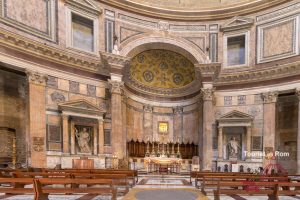
Afterwards there were only minor restorations and in 608 the Byzantine emperor Phocas donated the building to Pope Boniface IV, who consecrated it as the Basilica of Sancta Maria ad Martyres. Thus, the pagan temple was saved from destruction.
In 1625, Pope Urban VIII Barberini had the bronze covering of the porch removed and used to cast cannons for Castel Sant’Angelo. In the indignant people therefore arose the saying Quod non fecerunt barbari, fecerunt Barberini – what barbarians did not do, the Barberini did.
